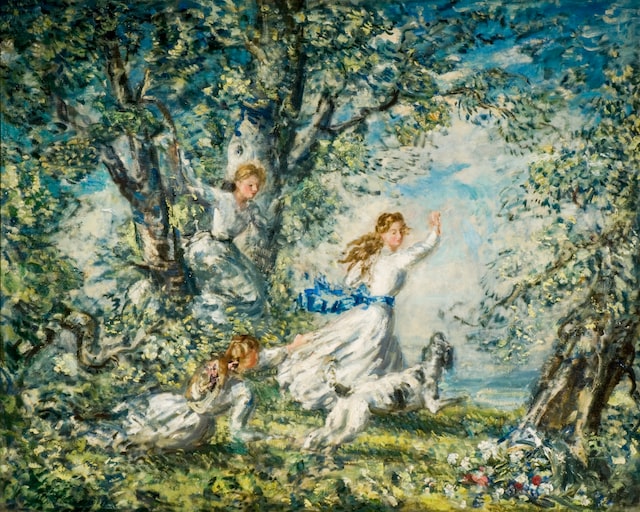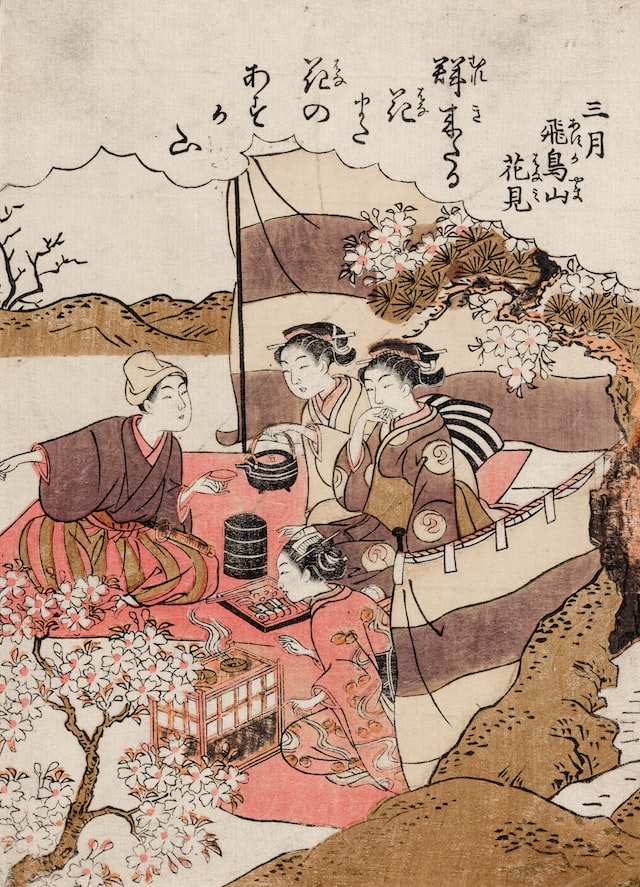Are you looking to give your interior a touch of artful elegance? Whether it’s an abstract print or a stunning portrait, art can be the perfect way to transform any space. With so many styles and techniques available, it can be overwhelming when deciding which style suits your interior best.
In this blog post, we’ll explore 7 of the most beautiful art styles conducive for use in home décor – from vivid street art to solemn traditional portraiture – no matter what type of atmosphere you’re aiming for; there’s something here for everyone! Read on to discover how these exquisite art forms can help bring vibrancy and life into your home.

1. Abstract Art
Abstract art is an excellent choice when decorating your interior, as it adds vibrant colours and meaningful shapes that evoke various emotional reactions. It also helps create a unique atmosphere in the room, making it lively and exciting. The structures of classicism don’t constrain abstract art, allowing you to take creative control when utilizing it in your home. There are many abstract pieces on the market with different textures, sizes, and palettes that can fit any space. With the range of options available, abstract art is a great way to bring life into any home.
Examples of abstract artists
From the 20th century, giants like Wassily Kandinsky and Piet Mondrian to more modern-day notables, such as Jackson Pollock and Mark Rothko. Kandinsky’s use of geometric shapes within his work creates an expressive balance. On the other hand, Mondrian focused on lines and form within his paintings; some explored range in just a few colours while others embraced many hues.
Pollock was an influential artist using unexpected mediums and created canvases that filled their boundaries using the drip technique. Lastly, Rothko’s masterpieces were large-scale pieces featuring colour fields that give off emotion from their overall composition. These are merely a few examples from the world of abstract art, each leading the way for future generations of abstract artists.
2. Pop Art
Pop art is the perfect way to liven up the interior of your home. It allows you to inject colour, highlight popular cultural figures, and showcase your style. Pop art can help express your creative side in any area, from bold prints to abstract paintings and fun sculptures. Whether you opt for bright colours, vibrant characters, or new ways to display artwork, it’s an excellent option for creating an eye-catching look that complements all tastes and styles.
Consider investing in framed art prints or canvas wall hangings for those looking to add some life to their living rooms and bedrooms. This will give your home a modern start that can be further developed over time as you discover new pieces that fit your vision and space.

Examples of Pop artists
Pop art has become one of the most iconic art movements today. It combines elements of interior design, graphic design, and other disciplines to create an engaging visual style. Some well-known examples of pop artists who defined this movement include Andy Warhol, Roy Lichtenstein, Peter Blake, Jasper Johns, Richard Hamilton, Claes Oldenburg, and Robert Indiana.
These artists contributed their distinct take on interior pop art: Warhol was famous for his vividly coloured prints of everyday objects; Lichtenstein pioneered his signature comic book art aesthetic; and Johns created a series of prints featuring mundane household items like flags and targets. Every artist’s work has fundamentally influenced interior pop art in subsequent years.
3. Cubism
If you want to add a unique touch of art to your home, consider using Cubism. This abstract art style began in the early 20th century and continues to captivate audiences today with its strong lines, bold colours, and interesting shapes. Whether it’s a painting on the wall or a sculpture in the corner, incorporating Cubism into your interior will surely draw the attention of your visitors. By doing this, you create a modern yet classic atmosphere – showing off your love for contemporary literature in a timeless fashion.

Examples of Cubism artists
Cubism was a revolutionary style of art that emerged in the first decade of the 20th century and quickly gained traction throughout Europe. Many famous artists have been associated with this movement, from Pablo Picasso to Eduardo Chillida. Picasso is widely recognized as one of the originators of this art form, though he was joined by other influential names like Juan Gris, Marcel Duchamp, and Fernand Léger.
All had a pioneering role in reshaping traditional artistic conventions and creating ways of exploring space and form in unexpected ways. Though their work appealed to different sensibilities and techniques, they all shared a vision of creating something extraordinary by applying Cubism’s tenets.
4. Contemporary Art
Contemporary art can truly transform an interior space, creating new perspectives and a sense of vibrancy. Modern artwork can instantly make any room appear brighter and more stylish, from murals to contemporary paintings or sculptures. There are countless options available for those seeking to incorporate contemporary artwork into any space.

From vibrant abstract pieces to statement-making works from up-and-coming local artists, there is no shortage of rich diversity in modern art today. Whether you’re looking for drama or a subtle touch of colour, searching for contemporary art that perfectly reflects your tastes is a rewarding experience.
Examples of contemporary artists
Contemporary art varies from sculpture to photography, installation art, performance, drawing and painting. Artists like Marlene Dumas, Damien Hirst and Pieter Hugo are amongst the most prominent figures on the scene today. Dumas’s work focuses on portraiture; her paintings depict people of all genders and ages in ethereal, dreamlike settings. Street photographer Pieter Hugo creates haunting imagery that explores questions of identity and belonging.
Finally, artist and sculptor Damien Hirst is well known for his installations that often incorporate themes related to death and mortality. Together, these three contemporary artists have pushed the boundaries of creativity in articulating their unique perspectives on the world through visual mediums.
5. Surrealism
Surrealism is a great way to bring an element of art, fantasy and creativity into your home. From furniture adorned with whimsical illustrative motifs to wallpapers that feature dreamy landscapes, surrealist elements in interior design are sure to make your home unique. Even something as small as a chair covered in funky fabrics or an abstract art hanging above your dining table can transport you into an exciting and magical space. Get creative with how you incorporate surrealism into your interior- seek out new and unexpected ways to reinterpret the genre, weaving it seamlessly within the aesthetics of your home.

Examples of Surrealist artists
Surrealism was an art movement that emerged in the early 20th century, inspiring some of the greatest modern works of all time. Artists such as Salvador Dalí and Max Ernst are renowned for bringing impossible figures, unusual shapes, and dream-like scenes to life with their artwork. There were also incredible female surrealists like Leonora Carrington, whose magical paintings featured subversive symbols, animals and mythological creatures, and Maria Eugenia Robins, whose love for investigative psychology inspired experimental and unique sculptures. All these artists remain idols in art history, their work consistently celebrated and admired by modern audiences.
6. Impressionism
Art has been used for centuries to set the tone of interior design, and nothing invokes a more calming yet stylish impression than Impressionism. With its pastel and organic colour palette, this genre shows its light touch in various forms and can be applied in many ways to bring that airy charm that embodies tranquillity into your home. Whether you display an oil painting or use subtle accents of Impressionism’s floral patterns on bed linen or table settings, incorporating this style into your home will bring an artful vision to life with a true sense of beauty and bliss.

Examples of Impressionist artists
Impressionism is a style of painting characterized by bright, light-filled canvases and loose brushstrokes. Some of the most renowned impressionist painters include Claude Monet, Pierre Auguste Renoir, Edgar Degas, and Berthe Morisot. These artists are known for portraying everyday modern life in a colourful and lively manner distinct from any other period’s art.
Monet, in particular, captured moments of light outdoors that exemplified a true representation of nature; his piece “Impression, Sunrise” inspired the name for the entire artistic movement. Renoir strived to capture the plenitude of life with his penchant for portraying fashionable women as his muses. Degas was fascinated with contemporary ballet dancers and captured their movements exquisitely on canvas.
Last but certainly not least is Berthe Morisot, an important female figure in impressionist art who defied societal norms by pursuing her professional career as an artist in an era where such actions were condemned by many. These four figures defined impressionism as we know it today, leaving behind masterpieces that will be treasured for centuries to come.
7. Japanese Art
Using Japanese art to decorate your home can add cultural sophistication to your interior. Traditional items such as kakejiku, uchiwa and hangé can provide an exciting contrast with more modern decorations around the house. You could look for original pieces crafted by skilled artists in Japan or choose from the wide variety of prints depicting the country’s beautiful landscapes for a softer touch.

Another option is to add framed Asian calligraphy inscriptions representing meaningful statements or wishes. You might also consider incorporating wallpaper into your home decor. There are many innovative wallpaper designs that feature traditional Japanese themes, such as cherry blossoms or wave patterns, that can add a touch of cultural elegance to your walls. Whether you prefer minimalistic accessories or larger sculptures, Japanese art will surely provide your space with undeniable elegance and remarkable charm.
Examples of Japanese artists
Japan has a thriving artistic community, and many artists work in various mediums. A few notable examples include Yayoi Kusama, Takashi Murakami and Yoshitomo Nara. Yayoi Kusama is a renowned visual artist whose pieces involve bright colours and geometric patterns. Her works have been exhibited annually since the 60s and feature prominently in worldwide galleries.
Similarly, Takashi Murakami is a contemporary artist known for his pop art-influenced style, often utilizing themes of neo-traditionalism from manga and anime to put his spin on traditional aesthetics. Finally, Yoshitomo Nara is an internationally acclaimed painter whose work often consists of playful animals with dark messages underlining their expressions. With its strong artistic scene, Japan offers plenty of inspiration to take in from these three extraordinary figures alone.
Where should artwork be displayed in the house?
Artwork can bring colour and life to any home. Deciding where to display the artwork is key to ensuring it stands out while remaining tasteful. Hanging art in a room that gets a decent amount of natural light is usually the best bet—it will draw viewers’ eyes to the piece and the room itself. It also helps if there is a contrast between the wall colour and hues in the printed piece.
Art displayed on a side table or shelf can blend into its surroundings if not done correctly, so care should be taken when selecting a spot for this type of display. Ultimately, artwork should always be placed thoughtfully within a home; doing so will ensure it adds value to the space for many years ahead.
The history of art in the home interior
Adding art to a home interior is nothing new. Artists have been a part of home decorating for centuries, from structural components like frescos to decorative wall hangings. Art has continually adorned our homes’ walls and furniture, serving both practical and aesthetic purposes. Historically, art added to a space could provide educational content and impart cultural identity, helping us embrace our values and heritage within the halls of our lairs.
With each passing decade and century, art in the home reveals much about the particular popular influences at the time – from classical Greek imagery in ancient Rome to Rococo interpretations in eighteenth-century France. Today’s art connoisseurs carry on this grand tradition – embellishing their four walls with historical depictions and contemporary works that speak to them personally.
Conclusion
All in all, there are many beautiful art styles available for you to use in your interior. By being aware of the different options, you can make sure that you choose something that will perfectly complement your home. If you need help finding the right piece of art for your space, don’t hesitate to reach out to a professional. They will be able to help you find something that fits both your taste and budget.






